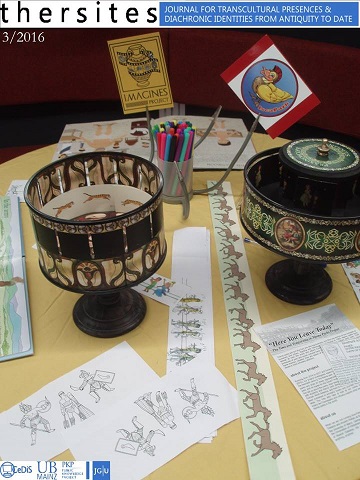Sublime and Tragic Fall: When Tiresias Met Athena
DOI:
https://doi.org/10.34679/thersites.vol3.31Keywords:
classical reception studies, classical mythology, TeiresiasAbstract
The Western cultural tradition has always been fascinated by the myth of Tiresias ever since the prophet’s first appearance in the Odyssey, an event that marks the beginning of his career in both literature and the arts. Among the many versions handed over by Antiquity to modernity, the one recorded by Callimachus in the Fifth Hymn. For the Bath of Pallas touches upon one of the most enigmatic questions in human life, the relationship between man and the gods. The encounter between Tiresias and Athena, as a matter of fact, hides that obscure sense which is at the root of the genesis of secrecy in literature and results in the most tragic and, at the same time, the most sublime of events. Lord Tennyson’s rewriting is one of the many shadows that the myth of Tiresias casts on the western cultural tradition. In his Tiresias the English poet conflates Callimachus’ version with the myth of Moeneceus in the Phoenician Women and establishes significant links with Scripture. Tennyson’s Tiresias, however, is not a victim of a tragic error, he is willing to see and to know, whereas Callimachus’ hero acts unwittingly. This marks the distance of this prophet, who in the end acquires a useless knowledge, from the Greek one, and changes completely our point of view with regard to man’s relationship with the godhead. Such is the difference between the ancient and the modern prophet that instead of asking ourselves “What did Tiresias really see?” – which is the very question at the heart of Callimachus’ version – we might ask a more fundamental question: “Why prophets in a desolate time?”.
Downloads
Published
Issue
Section
License
Copyright (c) 2016 Emilia Di Rocco

This work is licensed under a Creative Commons Attribution-NonCommercial 4.0 International License.
Authors who publish with thersites agree to the following terms:
- Publishing in thersites is free of any charges.
- Authors retain copyright and grant the journal right of first publication.
- Users are allowed to read, download, copy, distribute, print, search, or link to the full texts of the articles, or use them for any other lawful purpose, without asking prior permission from the publisher or the author, so long as the original work is properly cited and is not used for commercial purposes. The journal is published under the Creative Commons Attribution 4.0 International License. More information about this license is available at https://creativecommons.org/licenses/by/4.0/.
- Authors are able to enter into separate, additional contractual arrangements for the non-exclusive distribution of the journal's published version of the work (e.g., post it to an institutional repository or publish it in a book), with an acknowledgement of its initial publication in this journal.
- Authors are permitted and encouraged to post their work online (e.g., in institutional repositories or on their website) as it can lead to productive exchanges, as well as earlier and greater citation of published work (See The Effect of Open Access).


